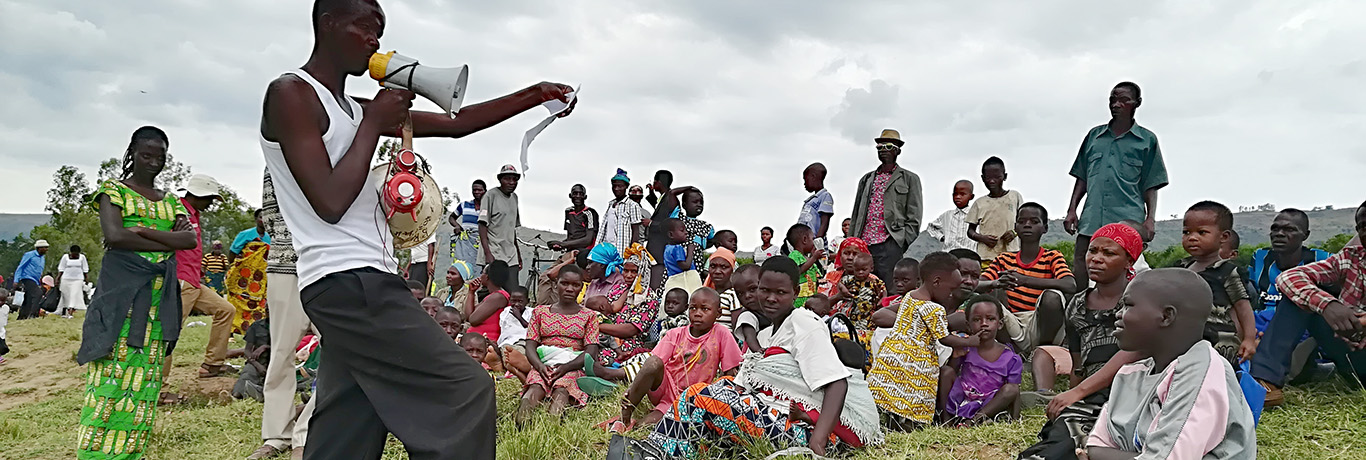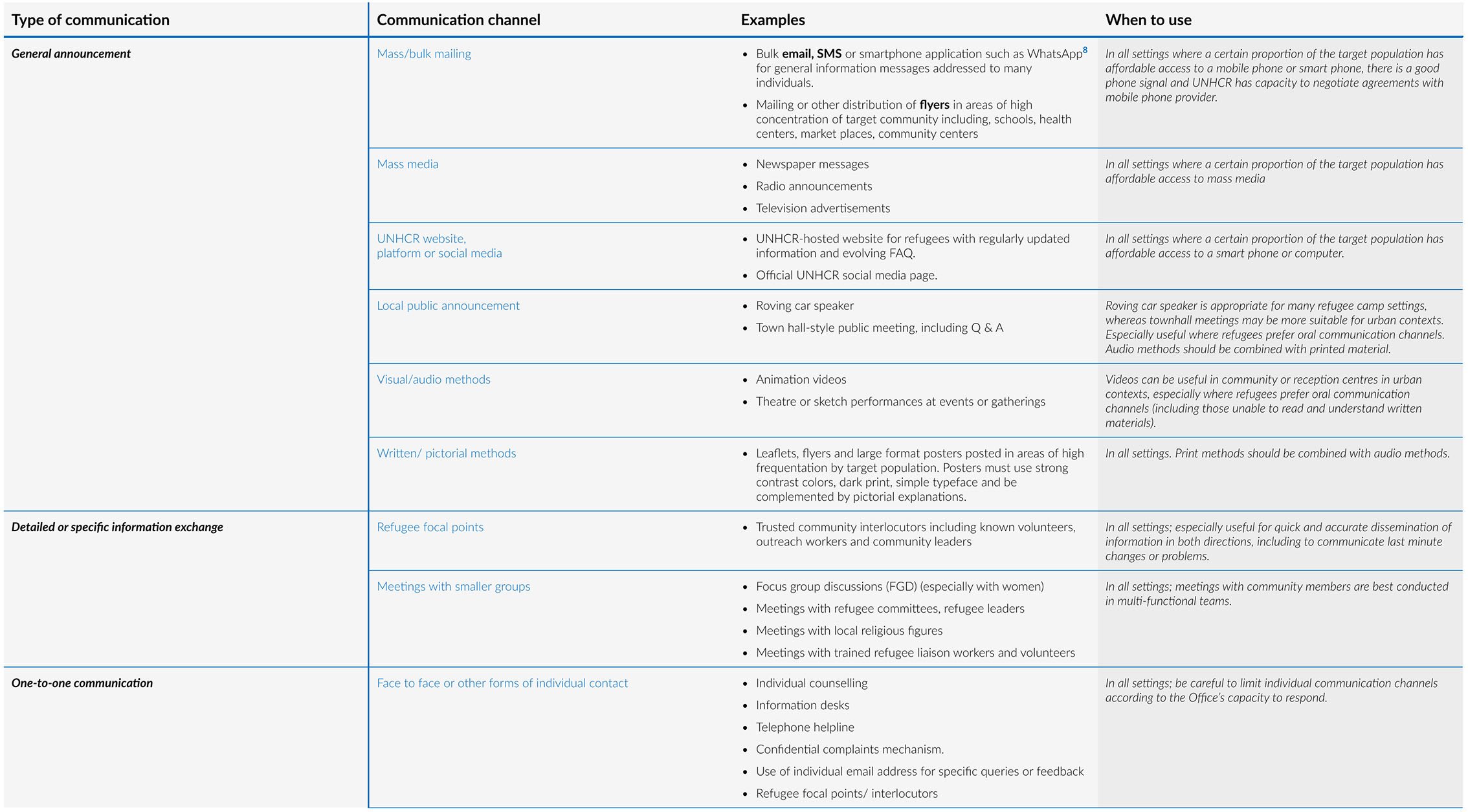Initial registration may be the first official procedure that new arrivals experience in the country of asylum; many people targeted by the activity may be unfamiliar with UNHCR and its mandate, and the reasons for registration may not be well understood. Amongst already registered refugee populations, some individuals and communities may have no regular contact with UNHCR, and may be uninformed about verification or other registration activities that concern them without targeted communication efforts and outreach. In order to reach all members of the target population, an information campaign must be designed through a participatory approach and implemented in a way that speaks to everyone, including marginalized groups and individuals at risk.
The Registration and Identity Management Officer1 plays a central role in the planning of the information campaign, including achieving agreement with management, protection and other relevant functional units on the key process, technical and logistical aspects that will be later developed and nuanced through consultation.
Once the key elements of the activity have been approved and confirmed, the Registration and Identity Management Officer should establish a timeframe for the planning phase and implementation phase of the information campaign.
1 Here as throughout, “Registration and Identity Management Officer” denotes the staff member responsible for registration, which may be the Protection Officer where no Registration and Identity Management Officer position exists in the operation.


 Note
Note